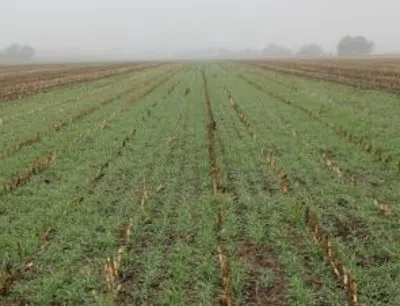After the rainiest April through June period recorded at many Minnesota weather stations, corn and soybean growers are facing increased weed and disease
management challenges. Assessing both crop health and weed control practices is more important than ever.
Dr. Alison Robertson, field pathologist at Iowa State University, tells growers to “get out of the truck and into the fields to see what diseases are present.” Armed with that information, growers can match varieties and hybrids with the disease resistance traits.
What might growers see this year? Excessive moisture and flooding favors different pathogens, like Pythium that causes damping off and Phytophthora root rot in soybean. While there are no rescue treatment options for either of these diseases, soybean varieties with resistance to Phytophthora are available.
Other soybean diseases, such as white mold and sudden death syndrome, are also favored by wet weather, but conditions will have to be right through July and early August for these diseases to develop. For those hoping that flooding would drown out the soybean cyst nematode, unfortunately, the nematode can survive flooded conditions for several months; however, where soybean planting was delayed, the number of SCN generations will likely be reduced, so the overall population increase may be less.
In corn, wet conditions favor less common diseases like Crazy top and Physoderma, diseases that rarely cause yield reductions. However, heavy rains and hail can increase the incidence of Goss’s wilt, a disease that can be economically important. Every time a disease is present, inoculum that survives in soil or on residue builds. If the environment is right and a susceptible host is present, the risk for disease increases.
For more information from University of Minnesota Extension, visit extension.umn.edu/crop-production.
University of Minnesota Extension news release





Comments